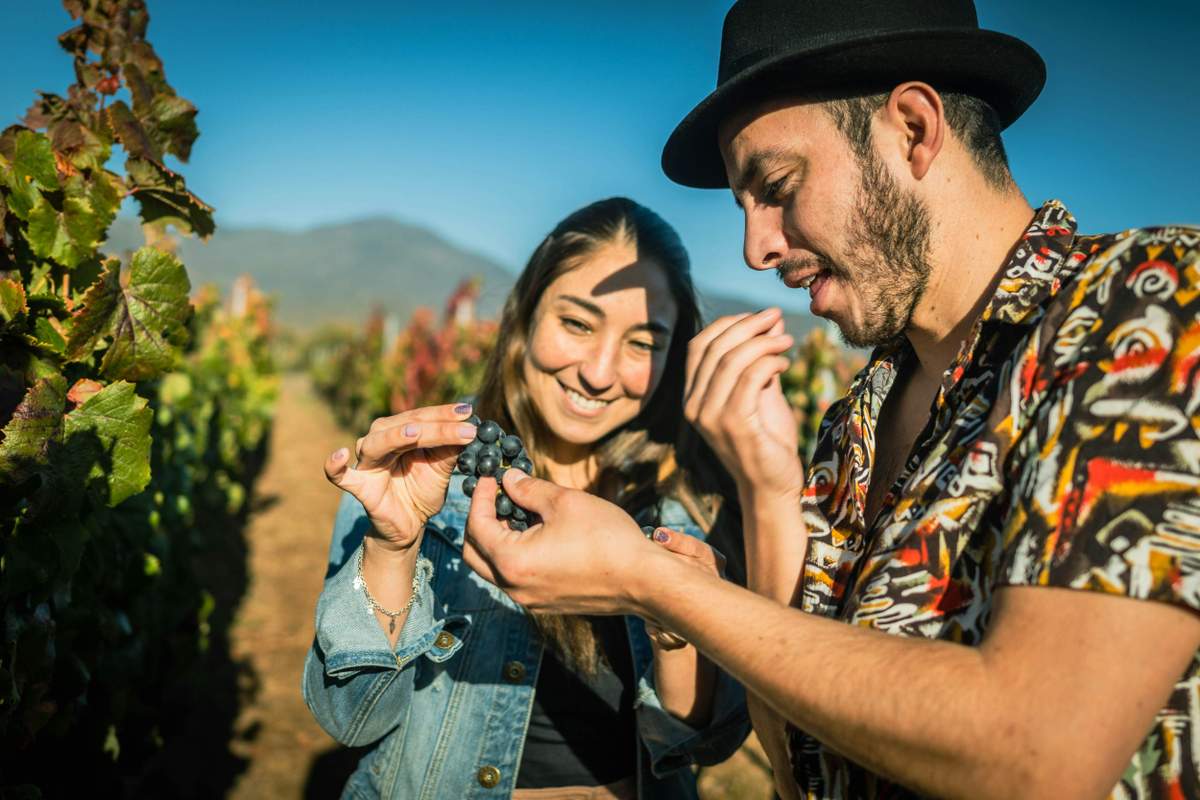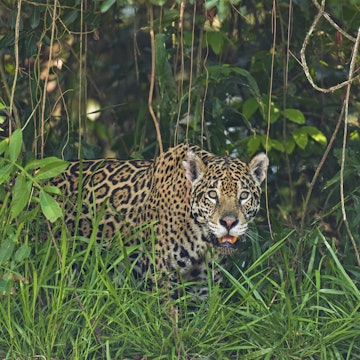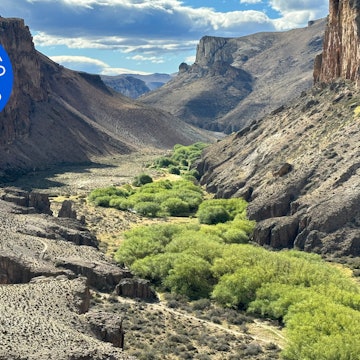
Discover Chile’s 11 top national parks



Wild vicunas in Parque Nacional Lauca, Chile. Inga Locmele/Shutterstock
Chile is a playground of the outdoors, home to a dazzling array of landscapes that appeal equally to the casual nature lover and the hard-core adventure enthusiast. What’s more, nearly a third of the long, skinny country’s landmass is protected parkland, making the joys of the outdoors accessible to all.
On a thrill-seeking trip to Chile, you can scramble up volcanoes, skirt fjords and glaciers, or navigate the wilds of the world’s driest desert. Indeed, Chile’s array of top hikes – which range from short jaunts to grueling multiday treks – are the stuff of legend. There’s only one problem: with 42 national parks to choose from, it can be difficult to know where to begin.
To take away some of the guesswork – and to get you excited about the majesty of the country’s natural offerings – here are 11 of Chile’s best national parks.
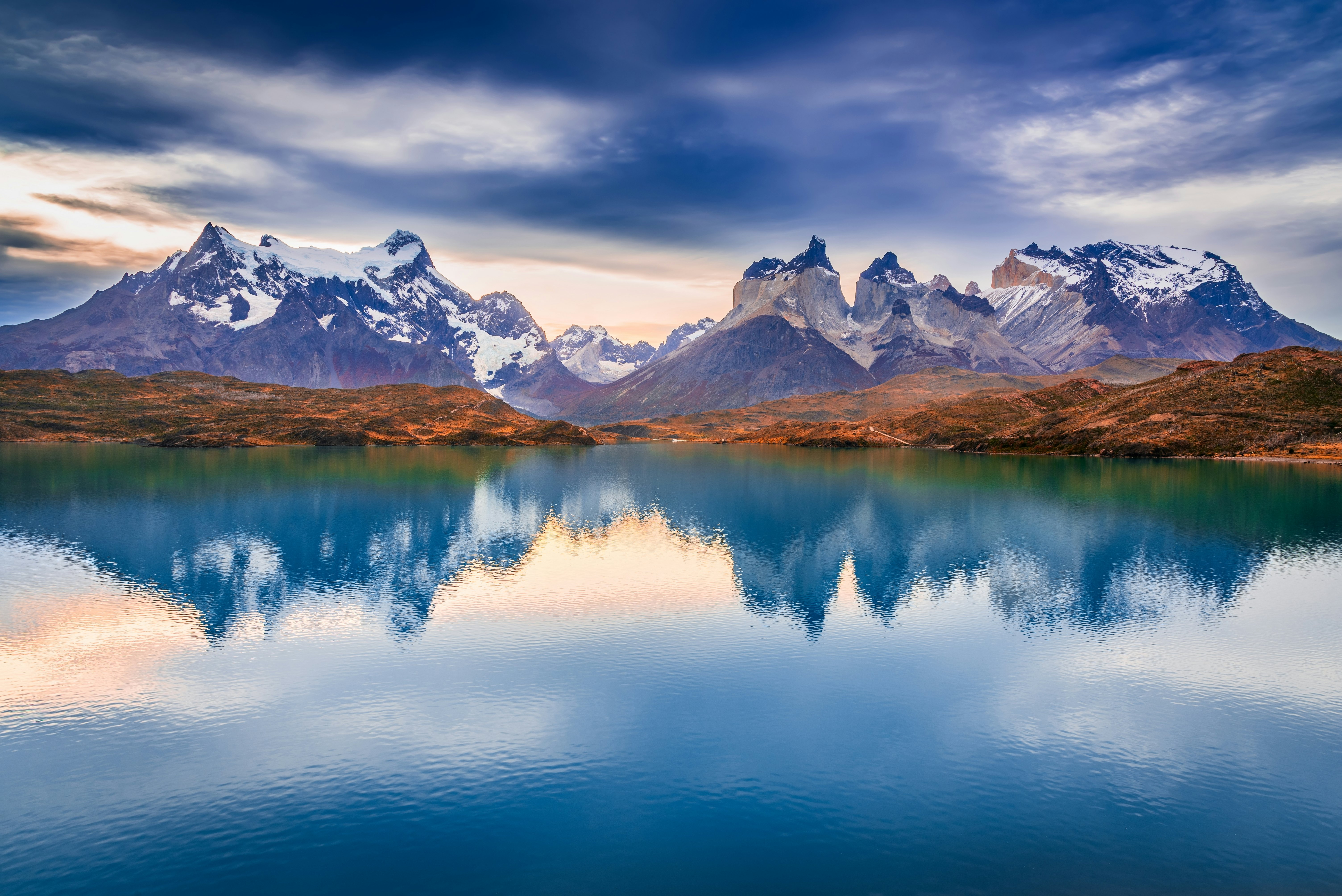
1. Parque Nacional Torres del Paine
Best park for sheer natural beauty
One of South America’s finest and most famous national parks, Parque Nacional Torres del Paine delivers the Patagonia travelers dream about. Wedged between Magellanic subpolar forests and the Patagonian Steppe, the park’s 1810 sq km are dominated by the eponymous towers known informally as Las Torres, a trio of 2800m granite pillars that soar near vertically into the sky.
The stunning massif is just one part of a dazzling range of landscapes, from emerald forests and open steppe to azure lakes and shimmering glaciers. The park is home to a similarly wide range of wildlife, including ostrich-like rheas (known locally as ñandus), circling condors, guanacos, endangered huemul (South Andean deer) and growing numbers of pumas.
Extensive accommodation options, ranging from refugios (rustic shelters) to five-star camps just outside the park’s boundaries, allow you to hike the famous W Trek or Paine Circuit trails in comfort – though unpredictable weather means that the park never feels fully tamed. You won’t have the place to yourself, though: Torres del Paine is a buzzy, super-photogenic destination, and the crowds it draws are straining its infrastructure and the environment.
Planning tip: Visit in winter (from June to August in the southern hemisphere) to search for pumas and enjoy a respite from both the crowds and the reserve’s driving summer winds.
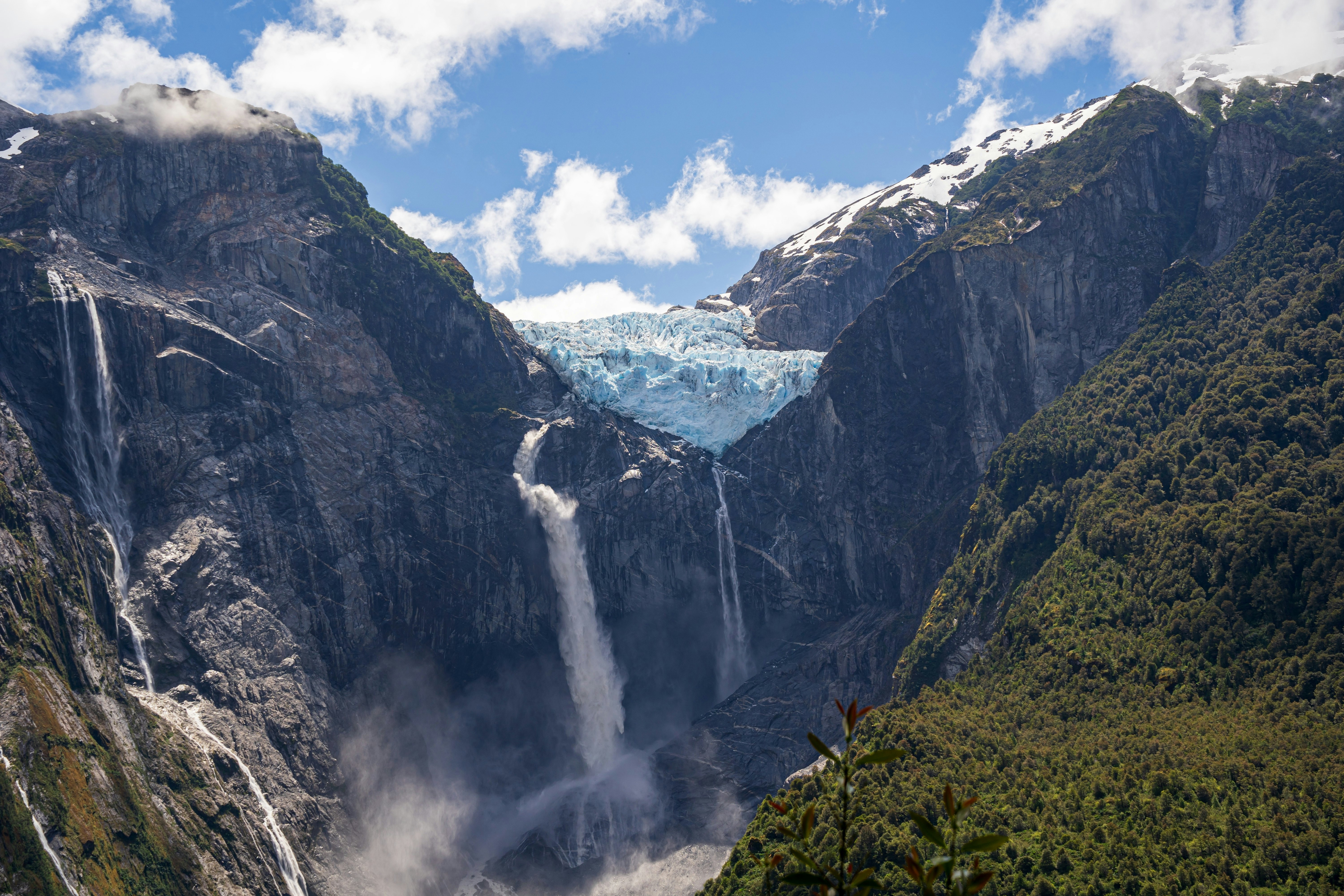
2. Parque Nacional Queulat
Best park for waterfall views
The Ventisquero Colgante glacier in Parque Nacional Queulat is low-hanging fruit (almost literally: it’s said to be “hanging” due to its position over a steep precipice). An easy way to take in the view (if from some distance) is to drive to a 200m, wheelchair-accessible boardwalk.
For a more vigorous way to the glacier viewpoint, hit the 3km Mirador del Ventisquero trail. You’ll first cross a bridge over the thundering Río Ventisquero, and then into a fantasy realm of virgin forests thick with ferns and southern beech (lenga) trees. This magical trail culminates in a sweeping vista of steep-sided cliffs, cascading falls, a milky turquoise lake and (of course) the creeping, calving Ventisquero Colgante itself. The signage at the beginning of the trail says this one takes 2 hours and 30 minutes, but that’s if you’re hustling; budget around 3 hours.
Note that the entire park closes at 4:30pm, so make sure you plan for a somewhat early exit. And however you decide to see the glacier, bring your own provisions, since there’s no park restaurant.
Detour: The nearest town to Queulat is Puyuhuapi, a small settlement established by Germans in 1935 as part of a migration project. Here, you’ll find a handful of hostels and restaurants, including Restorán Comuy-hupai, which serves excellent elevated Patagonian fare in German-Chilean digs (don’t miss the salmon or the Calafate Sour).

3. Parque Nacional Archipiélago Juan Fernández
Best park for naturalists
Lying 670km off the coast of Valparaíso, this little-visited and truly remote archipelago is home to 213 species of native flora, of which a staggering 135 are endemic. This gives Parque Nacional Archipiélago Juan Fernández a higher percentage of endemism than Hawai’i or even the Galápagos Islands.
On the main island, appropriately named Robinson Crusoe, a dozen trails crisscross primordial forests of perky tree ferns and giant rhubarb (really). Most routes start from the archipelago’s only true town, San Juan Bautista, where lobster dinners are practically obligatory, thanks to the abundance of crustaceans hauled from local waters. Some, however, choose to trek the 17km from the island’s remote airstrip to San Juan Bautista, immersing themselves immediately in the island’s wind desert, bushy green hills and fern-filled forests.
The park service allows non-guided treks on four half-day hikes departing from San Juan Bautista. The most spectacular is Plazoleta El Yunque (1km), a primeval forest at the base of the 915m-high Cerro El Yunque. Along the way, you'll traverse an elevated walkway past bizarre endemic flora favored by the Juan Fernández firecrown, a critically endangered hummingbird whose numbers have plummeted from about 10,000, in the 1970s, to 400 today due to invasive species like cats and coatis. Alternatively, you can climb up to spectacular overlooks like Mirador de Selkirk (2.5km), Salsipuedes (2km) and Cerro Centinela (2.5km).
Truly serious backpackers can set out on a 4-day, cross-island expedition. (Rosamaria Recabarren at Turismo Colonos de Juan Fernández can help arrange this and other guided treks.) All hikers must check in with CONAF, Chile’s national park service, before entering the reserve, unless they’re headed in from the aerodrome, in the company of a certified guide.
Planning tip: Robinson Crusoe’s lodging accommodations are few but cover all price points. CONAF offers free campgrounds in several protected bays. Clean and spacious four-room guesthouse El Yunque Hostal has native gardens, fluttering hummingbirds and a panorama of jungly peaks – plus discounts for solo travelers. And San Juan Bautista’s prettiest, largest lodge, La Robinson Oceanic, has flowery gardens, sweeping ocean views and even a welcome hot tub.
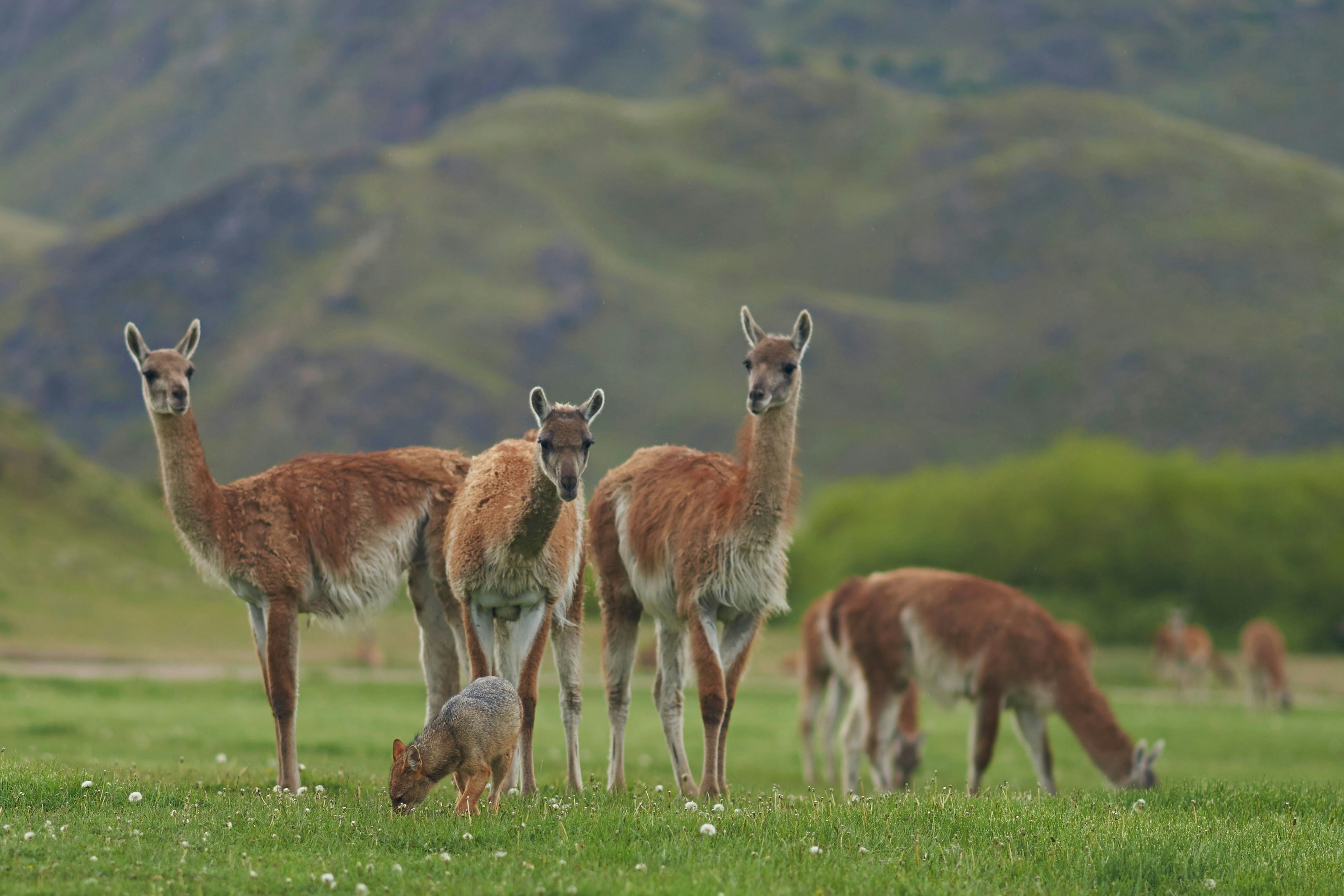
4. Parque Nacional Patagonia
Best park for wildlife
Wildlife watching doesn’t get much better than in 3045-sq-km Parque Nacional Patagonia. Formerly occupied by large cattle ranches, this section of Patagonian steppe along the Chacabuco River near Cochrane is today the site of one of the most ambitious rewilding projects in the world. Here, puma prowl grasslands as they hunt wild herds of llama-like guanacos, while 10% of the world’s remaining huemul deer enjoy a rare oasis. The park’s birds include massive condors, blushing flamingos, Magellanic woodpeckers and ostrich-like ñandus.
Of the park’s three zones, Sector Valle Chacabuco is the best for wildlife spotting, in particular guanacos (there are thousands). If you’re lucky, you may also spot flamingos, foxes, huemules and ñandus, too. The most accessible part of the park, Sector Tamango offers a few mountain trails that frame the impossibly blue Río Cochrane. While the views don’t compete with those at Valle Chacabuco, this is a good place to slow down and notice the details: bees buzzing in flowering trees, fish glistening in the clear water and wind sweeping across rocky outcroppings that overlook the adjacent Lago Cochrane. Straddling the border with Argentina, Sector Lago Jeinimeni is worth a visit for its blue-green lakes and flamingo habitat.
Planning tip: The visitor center and cafe in Valle Chacabuco is well outfitted with gear, snacks and other trail needs, should you be lacking any necessities when you arrive. You can even snag an espresso.
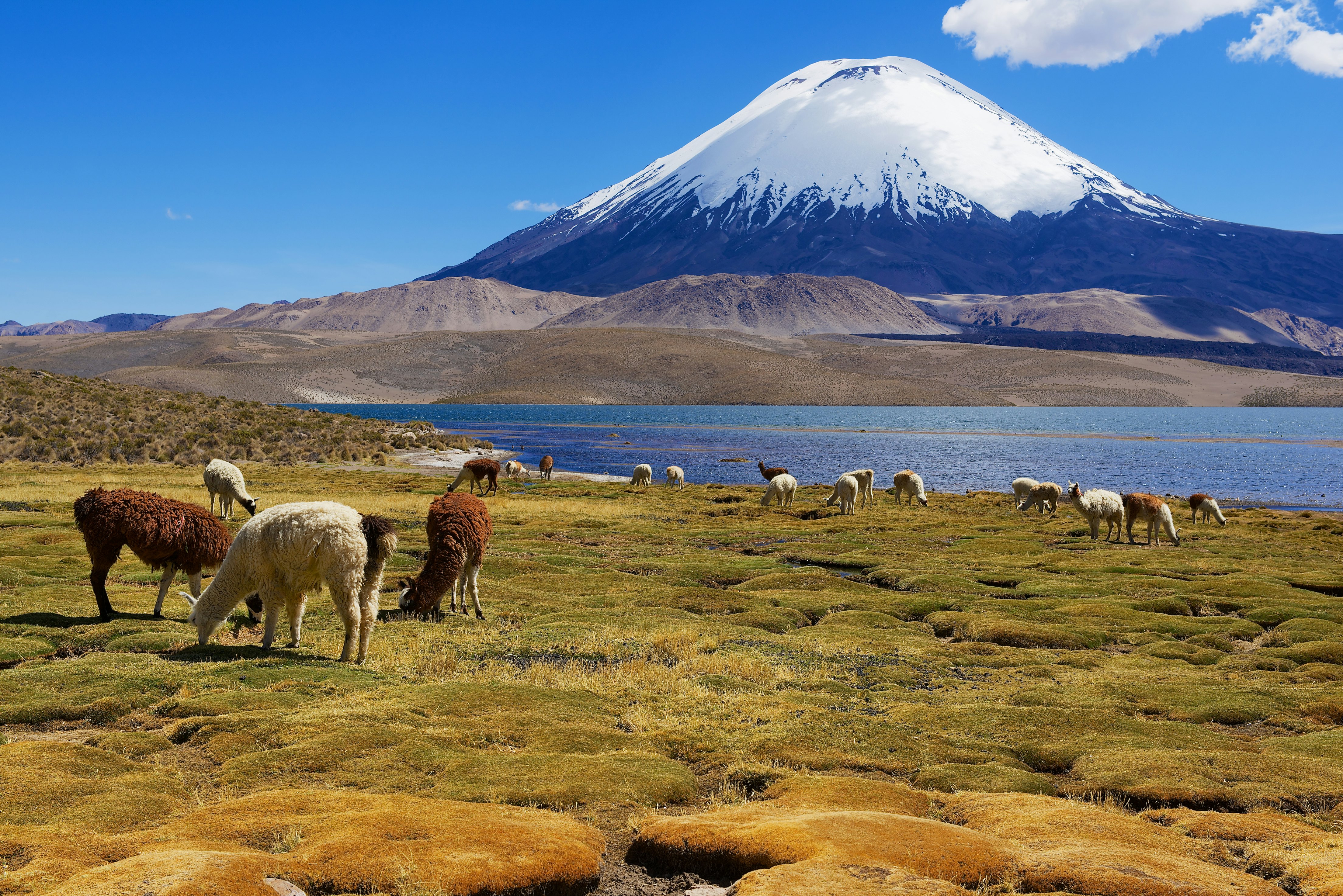
5. Parque Nacional Lauca
Best park in northern Chile
Travelers hoping to experience the Andean altiplano (high plains) invariably head to the parks near San Pedro de Atacama. But the reserves near the Indigenous Aymara hamlet of Putre, in Chile’s extreme north, are even more spectacular. The most accessible of these is Parque Nacional Lauca, with its twin volcanoes and a vast area of puna (high-altitude grassland) filled with alpacas, llamas and their wilder cousins, vicuñas and guanacos.
If you’re driving, pull over at Mirador Cotacotani for views of the snowcapped cone of Volcán Parinacota and the Cotacotani lakes. The park’s main sight is Lago Chungará, at an elevation of 4517m. Here, you can walk along a shoreside trail (allow around 30 minutes) for a better look at the lake’s birdlife, including flamingos.
Detour: The greater Lauca Biosphere Reserve includes two more parks that can be reached via unpaved roads to the south: Reserva Nacional Las Vicuñas and Monumento Natural Salar de Surire. Both comprise glistening salt flats, wilderness hot springs and turquoise lagoons filled with fluffy flamingos. Consider visiting in winter to avoid summer rains that can make roads impassable.
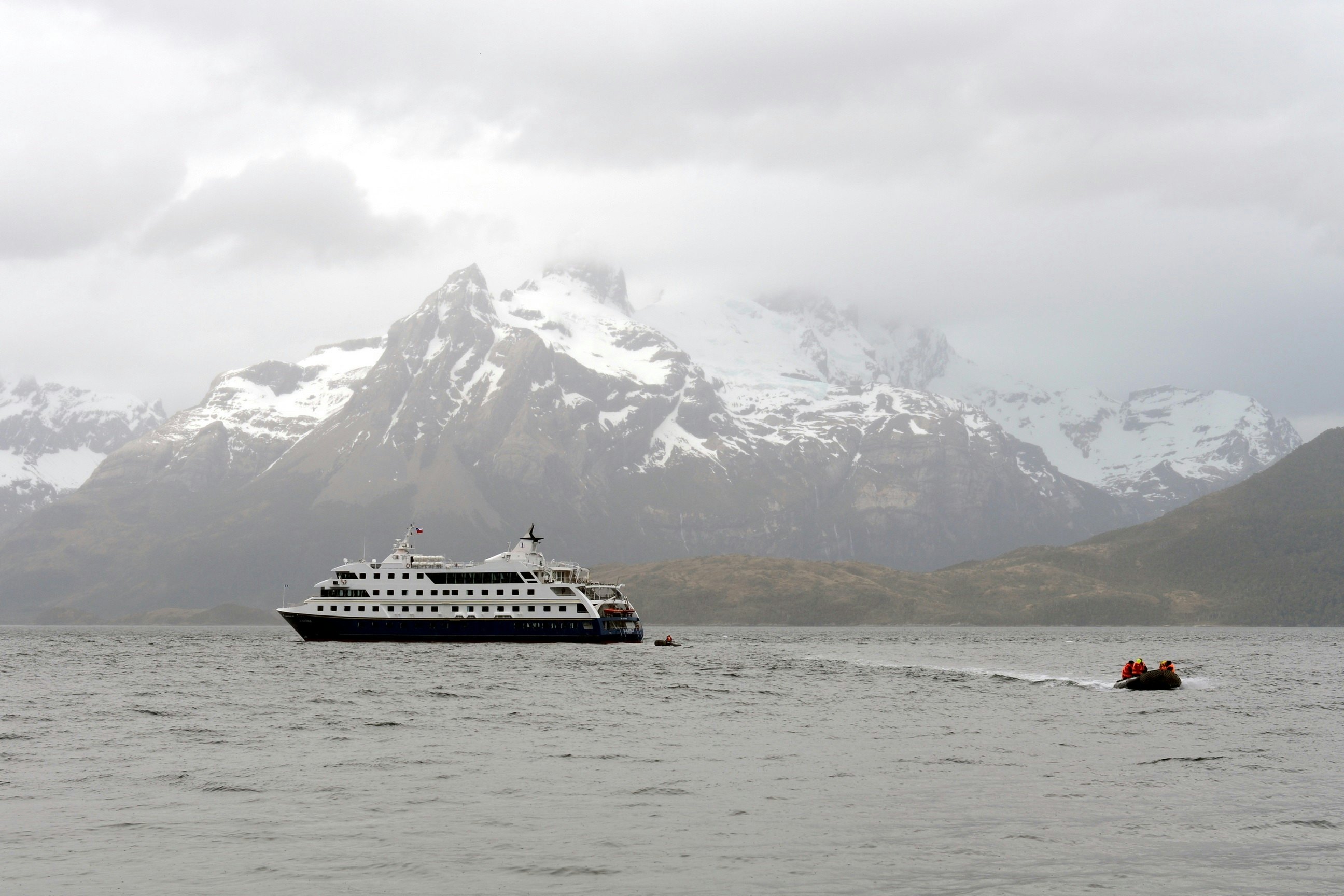
6. Parque Nacional Alberto de Agostini
Best park for utter remoteness
One of Chile’s largest and least-visited national parks, Alberto de Agostini is a great option for those who like to view raw nature and abundant wildlife from the comfort of a cozy, well-heated boat. Expedition cruises depart from Punta Arenas for the glacier-capped, 200km-long Cordillera Darwin, a succession of thickly forested hillsides and plunging fjords in Chile’s extreme south. Expect to sail into narrow fjords filled with whales, penguins and barking elephant seals.
Many outfitters carry kayaks on board so you can have animal encounters in this southernmost area of the Americas. This far south, the climate is cold all year round, so the best time to visit is the austral summer between December and February.
Planning tip: Getting to Alberto de Agostini is something of a challenge: there’s no access by road or trails, with only luxury cruises providing short excursions into the park. The most budget-friendly way to get a glimpse of park’s glaciers is to travel with the locals on the Transbordadora Austral Broom ferry between Punta Arenas and Puerto Williams – a gloriously unglamorous and worthwhile slow-travel experience in itself.
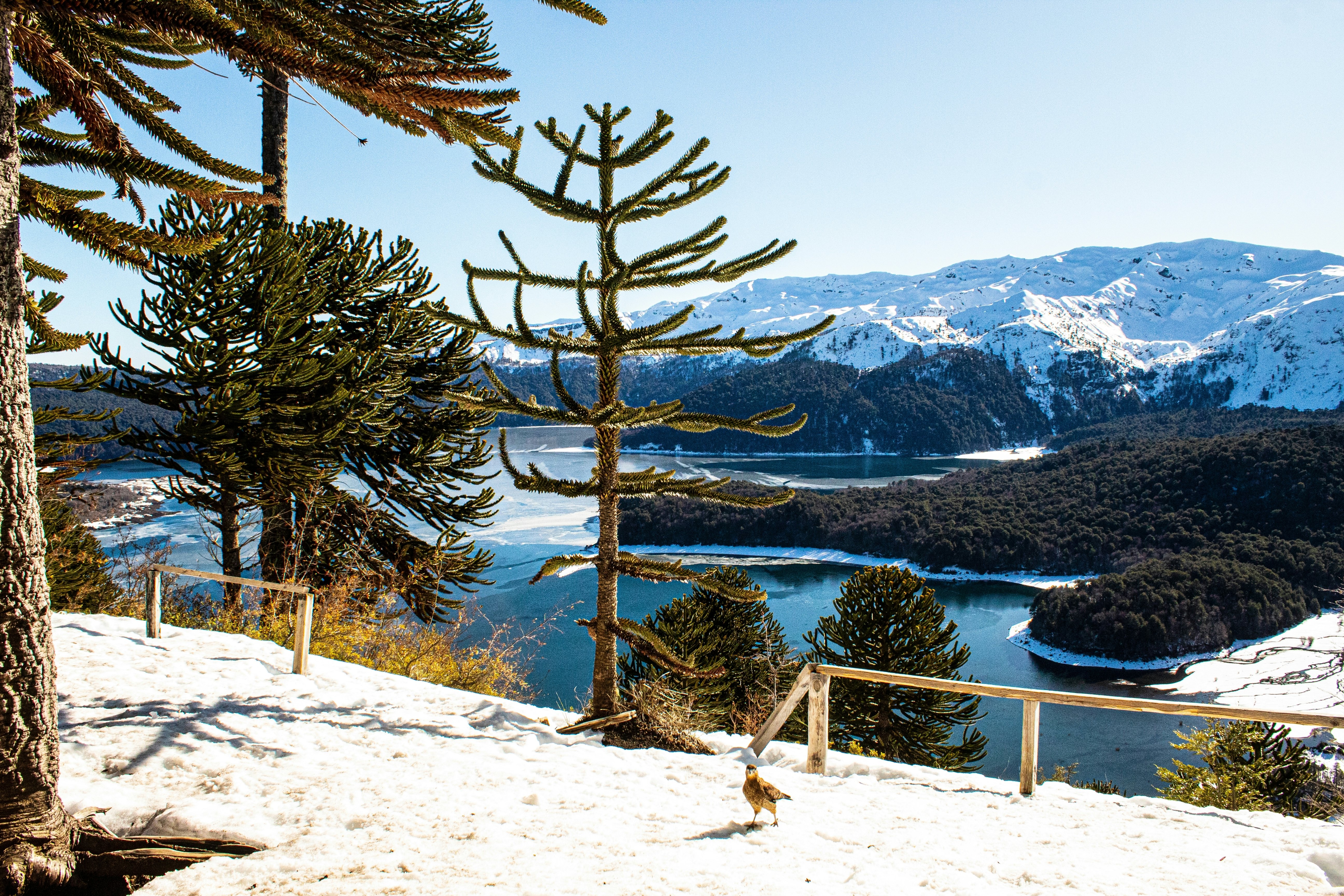
7. Parque Nacional Conguillío
Best park for volcanic remnants and otherworldly trees
A 4WD vehicle is recommended for the fabulous drive (1 hour 30 minutes) through the core of Parque Nacional Conguillío in the Lakes District. Expect to take in an otherworldly landscape forged by the 2008 eruption of Volcán Llaima (3125m). At Laguna Captrén, gaggles of submerged trees poke up through the water’s surface at this small translucent lagoon, which becomes a bird sanctuary during migration season (October to March). Also along the route lies Lago Conguillío, formed over the years by volcano melt and numerous eruptions.
Perfect for a break from your drive, the Sendero Sierra Nevada hiking trail (7km; 3 hours one-way) climbs steadily northeast through dense coigue forests and past a pair of lake overlooks. Further along the road, a small platform lookout frames the small Laguna Arcoíris, a translucent marriage of heavy-hued swirls of jade and turquoise that formed when lava jammed up a nearby estuary. On calm and clear days, you’ll see both its bottom and, on its surface, dazzling reflections of the surroundings.
Planning tip: Winter is especially beautiful in Parque Nacional Conguilío (though the road through the reserve closes for the season). Beyond skiing opportunities at Ski Araucarias resort, the park’s araucaria trees (bizarre conifers that look much the way they did at the time of the dinosaurs) pop up above the thick snow on Llaima’s slopes like arboreal fireworks.
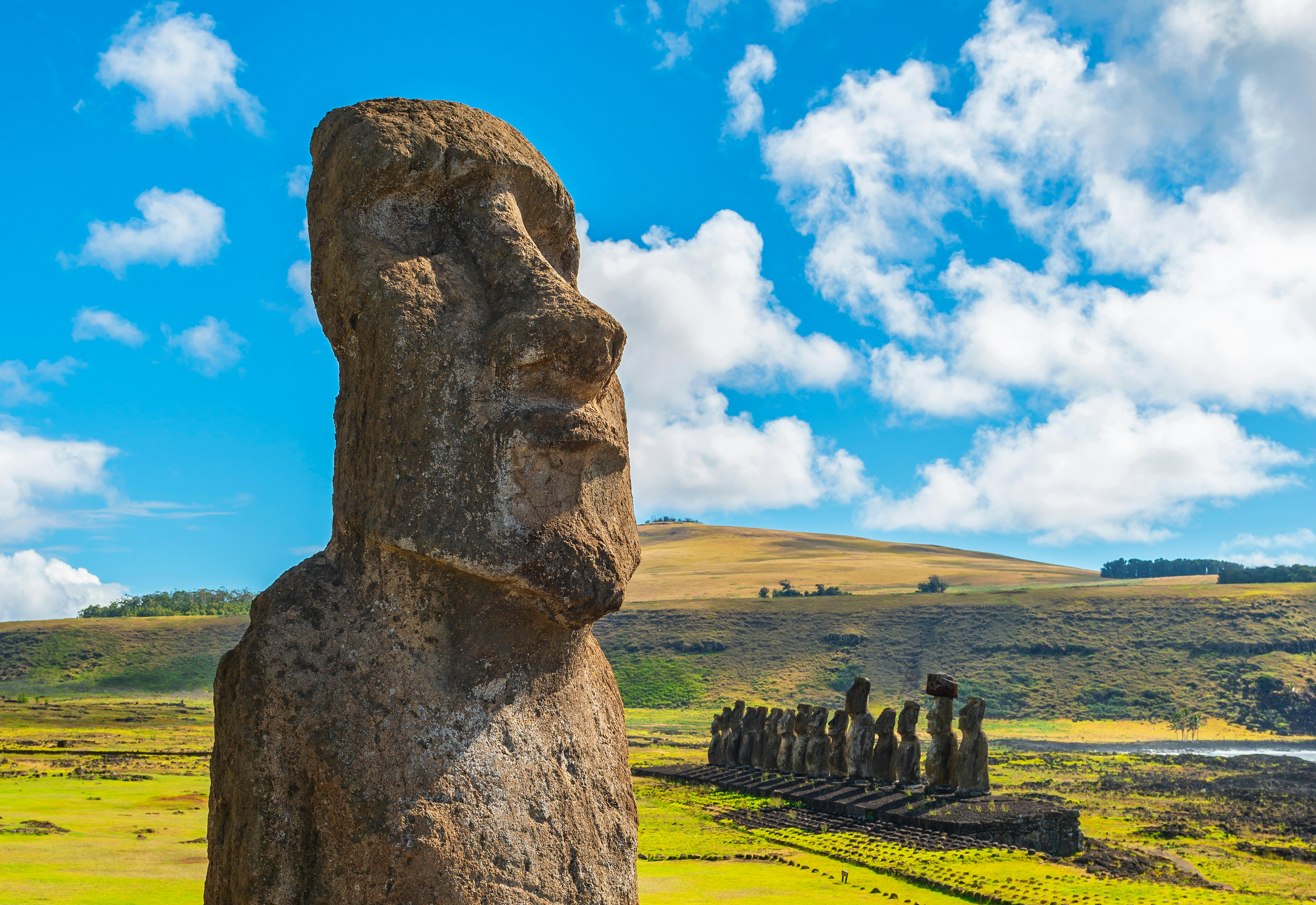
8. Parque Nacional Rapa Nui
Best park for history and mystery
Parque Nacional Rapa Nui protects nearly all of the awe-inspiring archaeological sites that give this small island (better known as Easter Island) such an outsized reputation. A UNESCO World Heritage Site, the park covers much of Rapa Nui beyond the town of Hanga Roa, and protects almost all of the island’s iconic moai. These monumental monoliths have perplexed humankind for centuries. How did one of the most isolated islands on Earth produce a civilization advanced enough to produce such artworks? How did that culture rise so fast and collapse so dramatically? More to the point: how did they manage to move these statues, each of which weighs at least 10 tons? While visiting the island won’t provide clear answers, seeing the moai up close is an experience you’ll never forget.
At Rano Raraku, the heads and shoulders of moai emerge from the grassy slopes, their torsos buried underground. The ancient Rapa Nui carved nearly all of their statues out of this quarry’s volcanic tuff; at this site, you can view them in various stages of progress.
Ahu Tongariki, the largest ahu (ceremonial platform) ever built, has 15 older moai with more distinct features. Restored with funding from a Japanese businessman in the 1990s, this is one of the island’s most dramatic sites, particularly when viewed at sunrise.
In a truly idyllic location, surrounded by swaying palm trees, the seven moai of Ahu Nau Nau stand in front of white sands of Anakena. The moai here are among the best preserved and are some of the only ones with restored pukao (stone topknots) on their heads. This site can be visited without a guide, meaning you can spend as much time as you like with the moai. Come early in the morning if you’d like to visit with few other people around.
Planning tip: When visiting the sites, you must stay with your guide and on the paths. Do not touch the moai or any other archaeological structures, and avoid walking on the ahu, as they are revered burial sites.
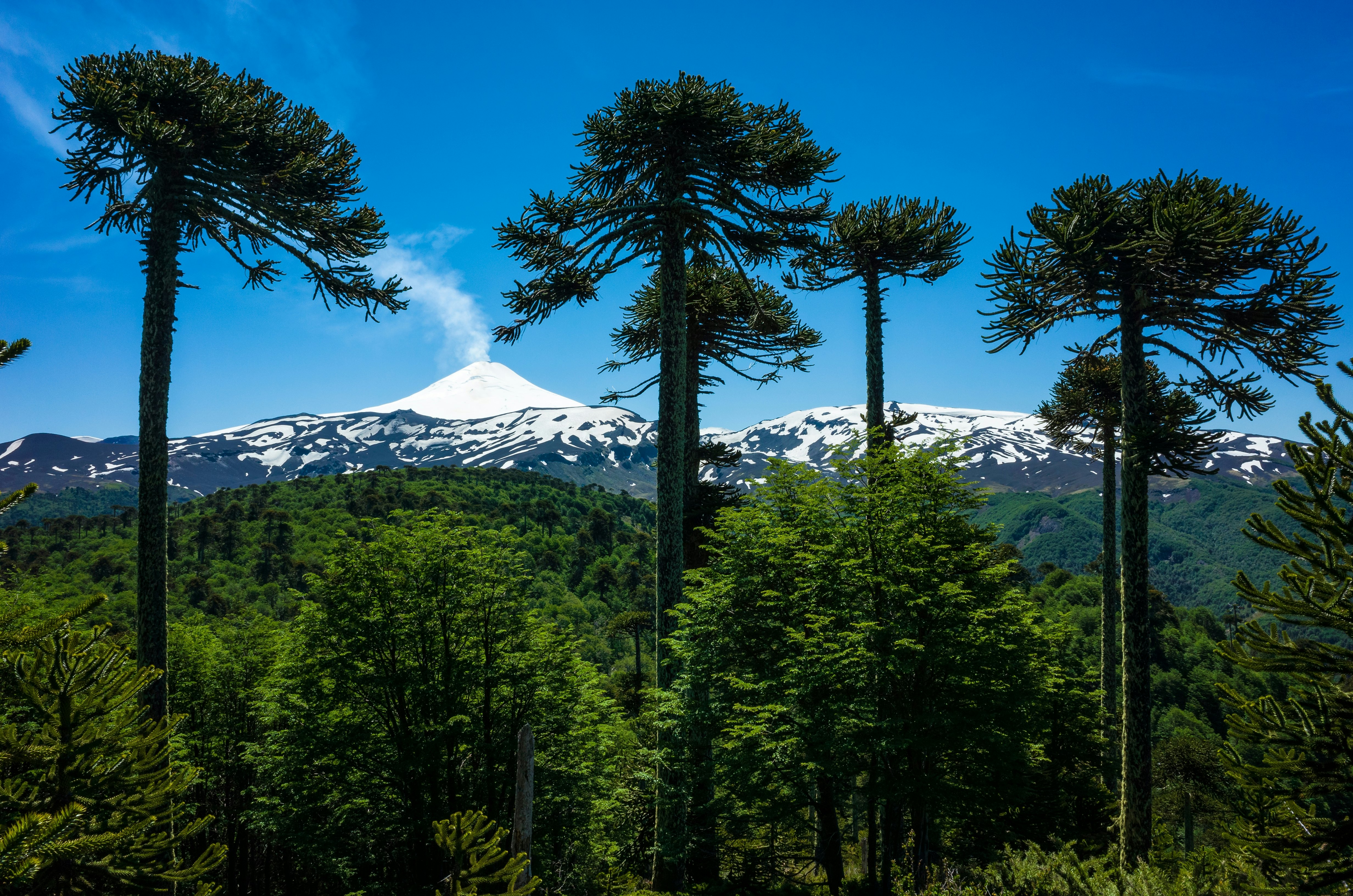
9. Parque Nacional Villarrica
Best park for close volcano encounters
The showpiece of Parque Nacional Villarrica, picture-perfect Volcán Villarrica (2847m) is one of Chile’s most active volcanoes, and just a 45-minute drive south of the adventure-sports hub of Pucón. You can tackle the stratovolcano in numerous ways, depending on the season, climatic conditions and whether this gorgeous, ominous beast happens to be spitting lava.
Topping the list is the breathtaking ascent to the volcano’s crater. Not much can compare to summiting a roaring monster like Villarrica and peering down into the smoldering belly of the beast. It’s a full-day activity, departing Pucón between 6am and 7am; while no previous mountaineering experience is necessary, the outing is no gentle stroll. Remember that reaching the summit is never a guarantee, and if the weather turns, responsible agencies will always turn back, no questions asked.
For trekkers, the Villarrica Traverse is a top choice. The 3- or 5-day outing ambles among all three of the national park’s volcanoes (Villarrica, Quetrupillán and Lanín), across lenga and araucaria forest, lava fields and glacial rivers. Ermitaño Expediciones can handle the logistics.
Planning tip: For something less active but equally thrilling, night tours set out for Villarrica when it’s particularly angry. From various vantage points on the volcano reached by car and a brief, unchallenging hike, you can ogle the volcano’s fiery guts setting the star-studded sky above the crater a glow. Weather permitting, it’s a spectacular show.
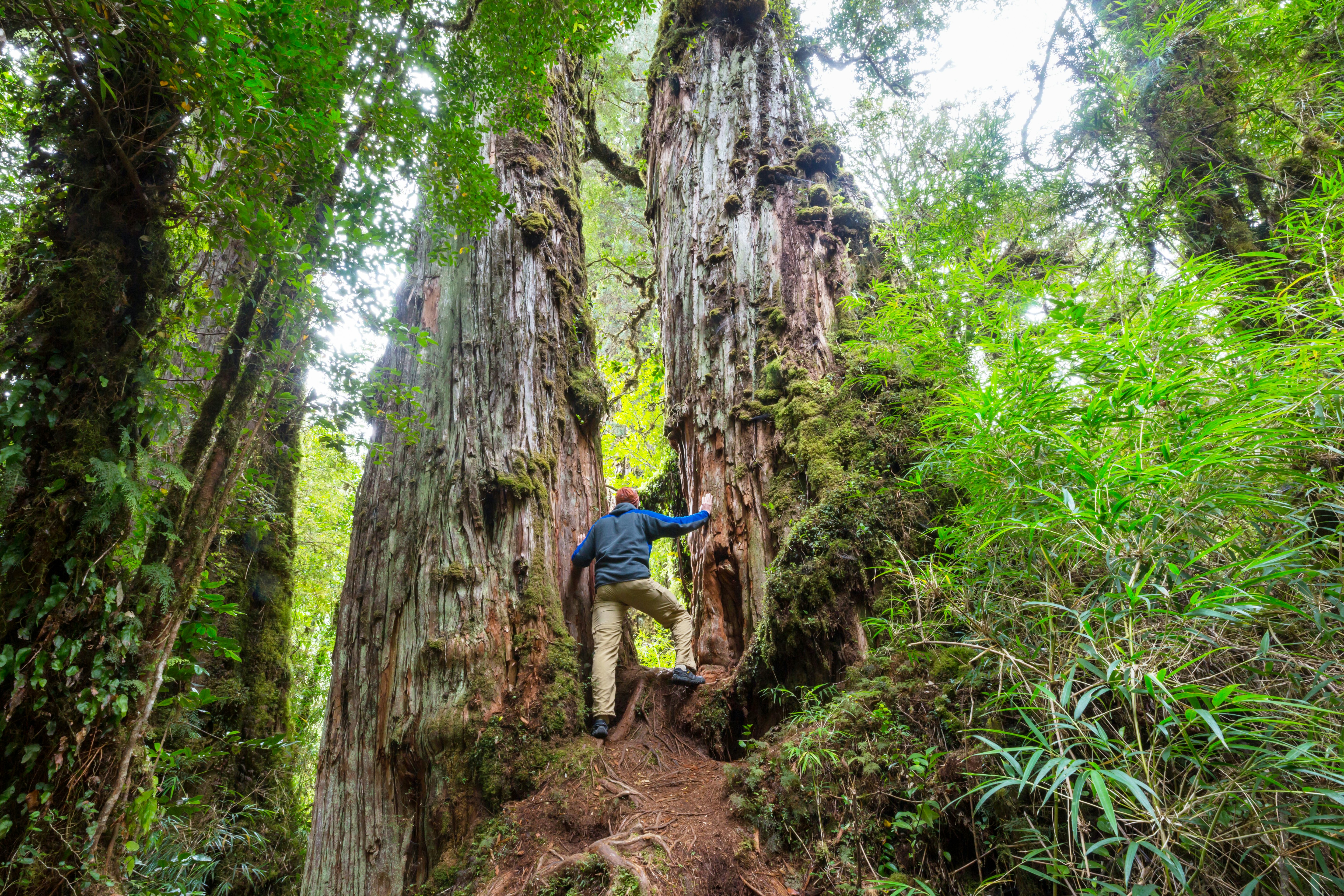
10. Parque Nacional Pumalín Douglas Tompkins
Best park for lush greenery
This heavily rainforested park is named after the late Douglas Tompkins, an American philanthropist who purchased vast swaths of Patagonia to restore the land to its natural state, and then donated it back to the Chilean government. In the heart of the Chilean Lakes District, Pumalín encompasses temperate rainforest, clear rivers and smoking volcanoes. It’s a model park for the region, with well-maintained roads and trails, extensive infrastructure and minimal impact.
Driving through the park is delightful – but it’s Pumalín’s trails that deliver Patagonian nature in high definition. About 14km south of Caleta Gonzalo, Sendero Los Alerces takes visitors through a majestic kilometer of temperate rainforest into a grove of nearly 3000-year-old alerce trees. Nearby, Sendero Cascadas Escondidas offers a 1-hour climb alongside a series of waterfalls. The most rewarding hike is the 3-hour round trip along the blast path of Volcán Chaitén to view its puffing crater.
Some 20km south of Chaitén you’ll find the El Amarillo Sector of the park. Here, the best hike is Sendero Ventisquero Amarillo, a flat, open 10km trek to the eponymous hanging glacier. It begins at the Ventisquero campground toward the base of the Michinmahuida Glacier. If you’re short on time, the 2.5km Sendero Ranita de Darwin loops through a regenerating forest dripping with multicolored mosses and delicate ferns. This is also a good option for Pumalín’s frequent rainy days, when the other trails may not yield their trademark views.
Planning tip: Rains are less frequent during the summer months (December to March), making this the best time for hikes to waterfalls, montane lakes or the caldera of Volcán Chaitén. You can access the park from the region’s main transportation hub, Puerto Montt.
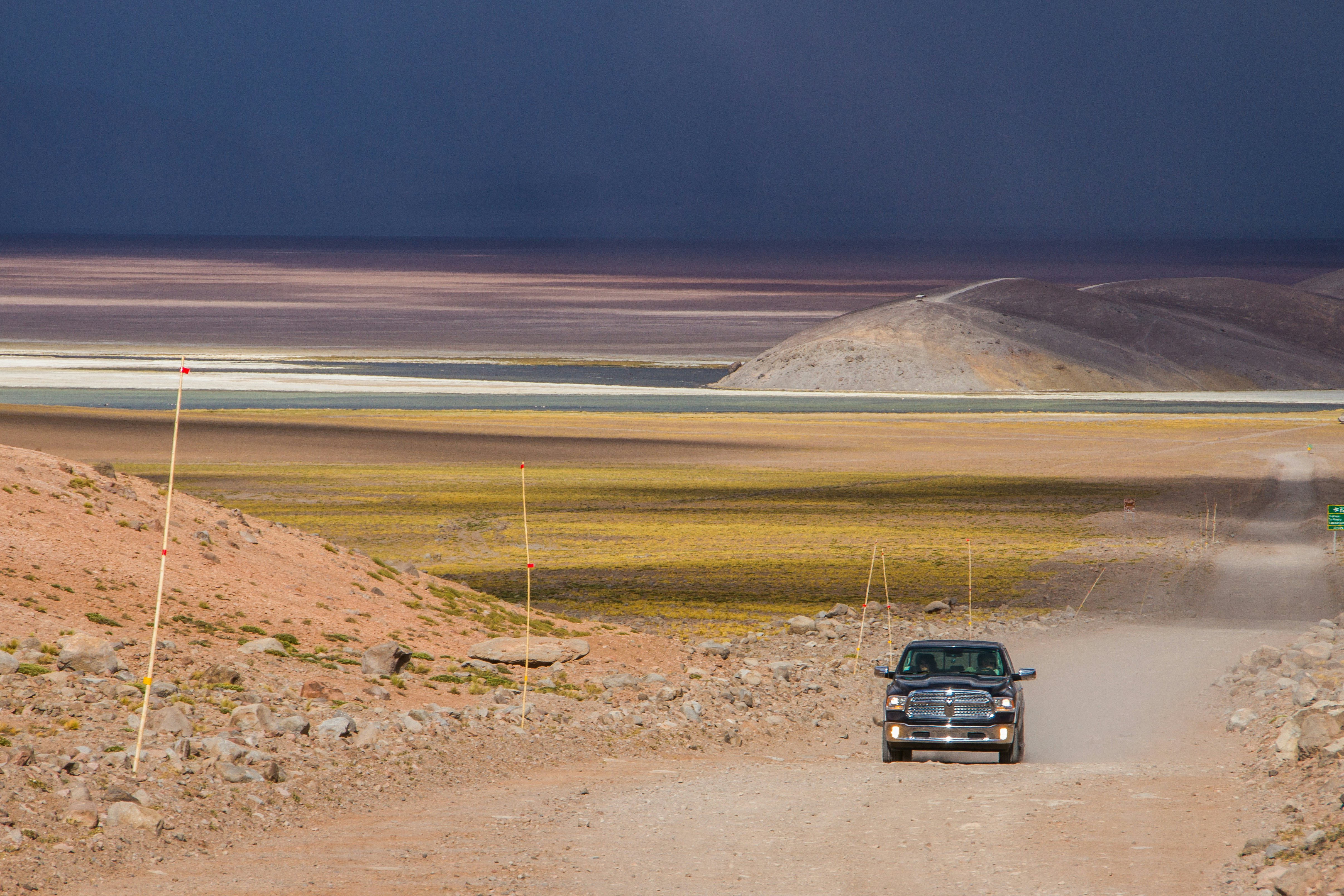
11. Parque Nacional Nevado de Tres Cruces
Best park for mountaineering
Hardcore mountaineers flock to Parque Nacional Nevado de Tres Cruces each year to acclimatize for trips up nearby Ojos del Salado – both the highest active volcano in the world and the second-highest mountain in the western and southern hemispheres. Not only that, the crater lake on the 6893m (22,615ft) peak is the highest body of water anywhere on Earth.
Those who don’t have the time, money or willpower for a full summit expedition can still enjoy the blue and green lagoons, arid Andean peaks and blindingly white salt flats of this stunning stretch of the Chilean high plains. The park is divided into two sectors: the larger sector Laguna Santa Rosa, which includes the lake and the Salar de Maricunga salt flat, and the smaller sector Laguna del Negro Francisco, where the water attracts thousands of birds in the summer.
Planning tip: It is possible to climb Ojos del Salado between November and March. The climb is not technically difficult, apart from the tricky final ascent, but the altitude makes it challenging. It is important to allow plenty of time to acclimatize before attempting to reach the summit. Agencies in Copiapó and Santiago run expeditions, which usually begin near Laguna Santa Rosa, at 3600m.
This article was partially adapted from Lonely Planet’s Chile & Rapa Nui guide, published in October 2025.





